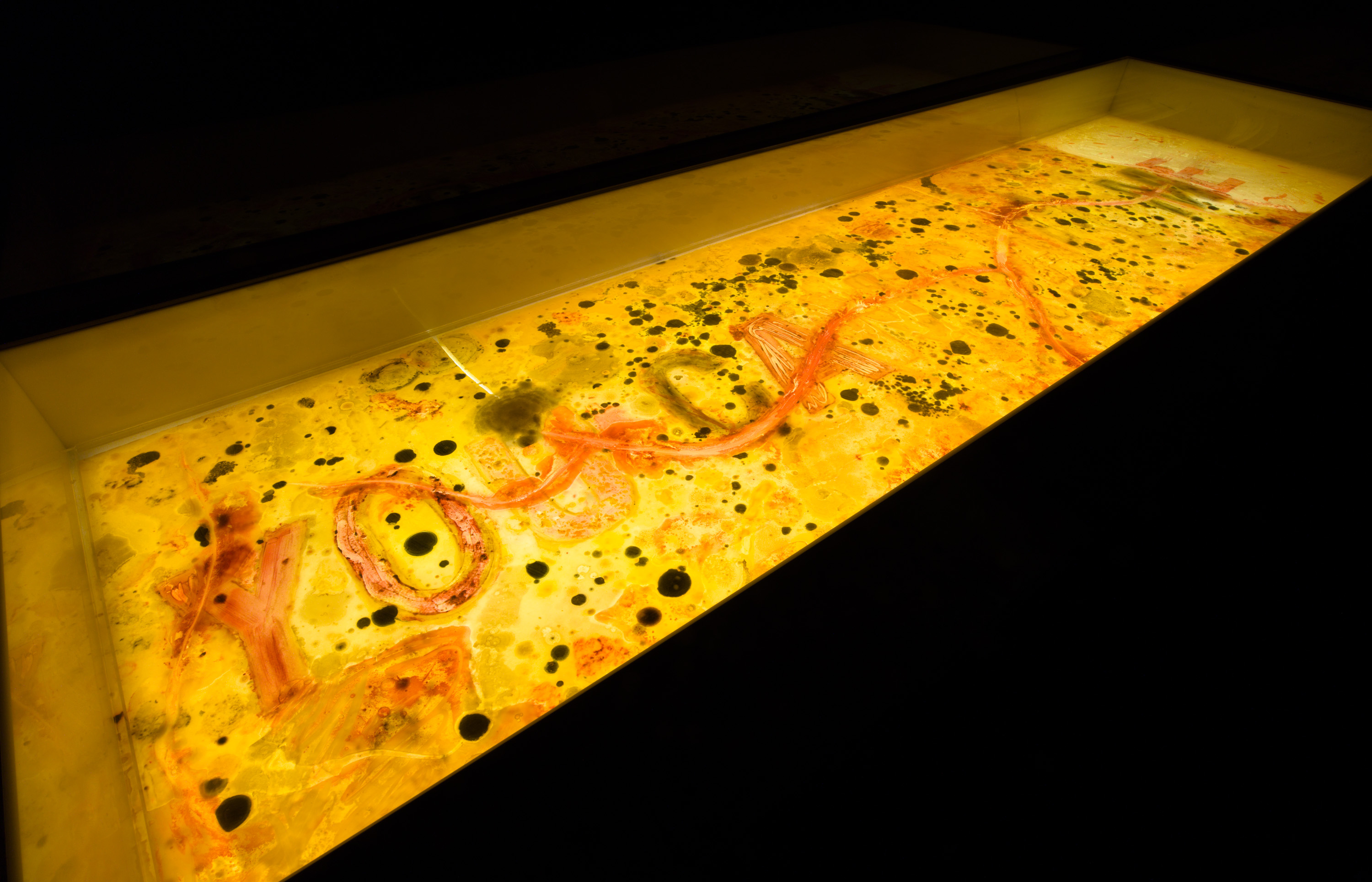NASA's Voyager craft have define platonic eroticismventured where no other human machines have ever gone — the space between the stars. But that comes with a cost.
At some 15 and 12 billion miles away, Voyager 1 and 2 are beyond the protective bubble of the sun, called the heliosphere. Out in this realm of interstellar space, the nearly 50-year-old probes have a higher probability of damage from hostile, high-speed particles, called galactic cosmic rays, owing to a higher number of particles zooming by every second.
"We are dodging bullets out there," Alan Cummings, a cosmic-ray physicist at Caltech — the research university that manages NASA's Jet Propulsion Laboratory — told Mashable. Cummings began working on the Voyager mission 51 years ago.
But direct hits are inevitable. In 2010, while on the edge of our solar system's heliosphere, Voyager 2 unexpectedly began sending gibberish back to Earth. Cummings suspects that a passing galactic cosmic ray tripped part of a computer's memory — though NASA was eventually able to rectify the problem. Most recently, Voyager 1 failed to send back readable data for five months, a particularly worrying incident that may also have been triggered by a cosmic ray. Something corrupted a computer chip.
"We don't know everything," Cummings explained, referencing the difficulty in perfectly diagnosing such profoundly distant mishaps. "But I do think galactic cosmic rays are the guilty party here for most of these problems."
"We are dodging bullets out there."
Galactic cosmic rays are merciless because they're extremely tiny, charged particles, traveling at incredible speeds — nearly the speed of light. "The galaxy is permeated with galactic cosmic rays," Cummings marveled. Astronomers think violently exploding stars — supernovae — are responsible for creating many of these particles, as the colossal shock wave from the event accelerates the particles. Stripped of their outer shells, they hurtle through space as just the nuclei of atoms.
The heavier ones, like iron atoms transformed into galactic cosmic rays, can cause more damage than the lighter, more abundant ones. (It's somewhat like getting hit by a bowling ball at 50 mph, versus a golf ball.) They can zip right through a computer chip — altering its code — or even become lodged there, where they can pack an even bigger punch by doing permanent damage.
 A graphic showing Voyager 1 and 2 having traveled beyond the sun's partially protective heliosphere, and into interstellar space. Credit: NASA / JPL-Caltech
A graphic showing Voyager 1 and 2 having traveled beyond the sun's partially protective heliosphere, and into interstellar space. Credit: NASA / JPL-Caltech  Engineers installing a golden record — containing music, sounds, and imagery from Earth — to the side of Voyager 1. Credit: NASA / JPL-Caltech
Engineers installing a golden record — containing music, sounds, and imagery from Earth — to the side of Voyager 1. Credit: NASA / JPL-Caltech Of course, NASA spacecraft like the Voyagers are equipped with radiation-resistant parts and shielding, including wrapping around critical cables. These layers can keep out some particles — but not all. "You can protect yourself to some extent, but a high-enough-energy particle will get through your defenses," Cummings explained. Early in the Voyager mission, the space agency's engineers were worried about the craft passing by Jupiter, a planet that produces intense radiation. A person hypothetically riding aboard Voyager would have gotten hit with a radiation dose 1,000 times the lethal level. "That was pretty hostile," Cummings recalled. He said a few detectors on his galactic-ray measuring instrument (the Cosmic Ray Subsystem)were wounded, but overall, both the instrument and entire spacecraft survived to produce new scientific results, including vibrant, unprecedented imagery.
Yet out in the deeper cosmos, the Voyagers face a different threat. Around the gas giant Jupiter, the craft were sprayed with charged particles, but they were lower energy. Now in interstellar space, the craft are more often exposed to those high-energy particles. Any place in space — whether in our solar system or beyond — can meet the threat of a harmful galactic cosmic ray. But the odds are boosted in the interstellar realm.
"Explorers run into problems when they enter into new territory."
When might another such hit come? "It's just a random chance out there right now," Cummings said.
 The Voyager team celebrates after restoring some communication to Voyager 1 on April 20, 2024. Credit: NASA / JPL-Caltech
The Voyager team celebrates after restoring some communication to Voyager 1 on April 20, 2024. Credit: NASA / JPL-Caltech Billions of miles away, on Earth, in sunny Pasadena, California, however, the craft have a guardian. Or, a legion of guardians. NASA engineers have for decades devised ways to keep the aging, radiation-pummeled craft alive. They communicate with vintage computers aboard the nearly half-century old probes. Talking to an interstellar craft isn't like sending a text: It takes almost two days to transmit and then receive a message. Most recently, in April, NASA engineers squared off with a permanently-damaged computer chip on Voyager 1. By beaming messages to the craft, over 15 billion miles away, they successfully stored the defunct chip's unique code in other chips, as "no single location is large enough to hold the section of code in its entirety," the agency explained. The craft is once again communicating about its health, but not yet returning science data.
"You have to praise the engineers," Cummings emphasized.
They've certainly been busy. And in hostile space, with high-speed particles ceaselessly whizzing by, they'll likely continue to be. The craft are running low on nuclear fuel, but could — if undamaged — beam back unprecedented readings from uncharted space through the mid-2030s.
"Explorers run into problems when they enter into new territory,"Cummings said. "Lewis and Clark didn't have an easy time, either."
 Nineteenth
Nineteenth
 Can People Write from the Perspective of Animals?
Can People Write from the Perspective of Animals?
 Of Truffles and Holy Week
Of Truffles and Holy Week
 AC Milan vs. Feyenoord 2025 livestream: Watch Champions League for free
AC Milan vs. Feyenoord 2025 livestream: Watch Champions League for free
 When Did Table Settings Become So Lavish?
When Did Table Settings Become So Lavish?
 The Secret History of “Eeny Meeny Miny Mo”
The Secret History of “Eeny Meeny Miny Mo”
 Can You Spot the Fake Books at Shakespeare and Company?
Can You Spot the Fake Books at Shakespeare and Company?
 Airan Kang’s Luminous Books Rewire Your Synapses
Airan Kang’s Luminous Books Rewire Your Synapses
 Celtic vs. Bayern Munich 2025 livestream: Watch Champions League for free
Celtic vs. Bayern Munich 2025 livestream: Watch Champions League for free
 Feminist Fumes: Anicka Yi’s Miasmatic Art
Feminist Fumes: Anicka Yi’s Miasmatic Art
 “Say Stupid Shit”: A French Philosopher Mutters to Himself
“Say Stupid Shit”: A French Philosopher Mutters to Himself
 Nabokov Knew How to Hate a Party
Nabokov Knew How to Hate a Party
 Trump's foreign aid freeze halts funding for digital diplomacy bureau
Trump's foreign aid freeze halts funding for digital diplomacy bureau
 The Secret History of “Eeny Meeny Miny Mo”
The Secret History of “Eeny Meeny Miny Mo”
 How “The Pickwick Papers” Launched Charles Dickens’s Career
How “The Pickwick Papers” Launched Charles Dickens’s Career
 Derrida’s Teacher Calls His Writing “Quite Incomprehensible”
Derrida’s Teacher Calls His Writing “Quite Incomprehensible”
 Swole Jeff Bezos joins Instagram to tease his new ROCKET FACTORY
Swole Jeff Bezos joins Instagram to tease his new ROCKET FACTORY
 Photos from Dhallywood, Bangladesh’s Film Capital
Photos from Dhallywood, Bangladesh’s Film Capital
Jaguar shows off electric concept car in virtual realityReport: 400 million adult site accounts hacked, and your password is lousy'StarCraft II' pro Scarlett is the topLego will no longer give away free toys with the Daily MailSpartan highYes, that was a U.S. Senator driving an Uber'Fantastic Beasts and Where to Find Them': Movie ReviewTourists flock to see Donald TrumpWhat 'Mars' gets right about colonizing the Red PlanetHow to take a smartphone picture of the supermoon that isn't a blurry blobSpartan highFamous writers unite for children's rights in 'Tiny Stories' campaignNow you can get your free Daydream View for your Google PixelThis book is the perfect gift for every Apple fanboy and fangirlAir Jordan takes flight with a sneaker blog of its ownThe Apocalypse stories aren't fun anymore. We need hope, HollywoodThis book is the perfect gift for every Apple fanboy and fangirlKendall Jenner unexpectedly deleted her Instagram accountSeriously beautiful science cocktails will have you rethinking your alcohol choicesDrake is the king of the party in new music video featuring 21 Savage Chelsea Handler on using her show to make a global impact Japanese cosplayer poses with a live octopus for a photoshoot 'British Colonial Co.' restaurant accused of racism responds online GoPro finally shows off its foldable Karma drone, and it's super sleek How wireless emergency alerts work Tom Brady's son dabbed when he caught a touchdown pass from dad Emmys 2016: 'Transparent' director Jill Soloway makes us cry Why pressure cookers make such deadly explosive devices Member of the royal family comes out as gay and makes history The highest rent in the U.S. belongs to venture capitalists in Silicon Valley GoPro's new Hero 5 action cameras make it easier to create epic videos Man apologises for bigotry outside mosque with a sign of solidarity Farewell flower crowns, it's all about face flowers now Google's new Trips app will be your offline traveling companion The People's Report Cards hold the world's governments accountable Interview: 2Dawn Games on its upcoming shooter 'Ravaged' and life as an indie studio Facebook hires top ex Harry Potter's childhood home can now be yours — for a price Huawei nova and nova plus: Mid Amazon, Netflix strike deals in India for local video content
2.2852s , 10220.0078125 kb
Copyright © 2025 Powered by 【define platonic eroticism】,Feast Information Network